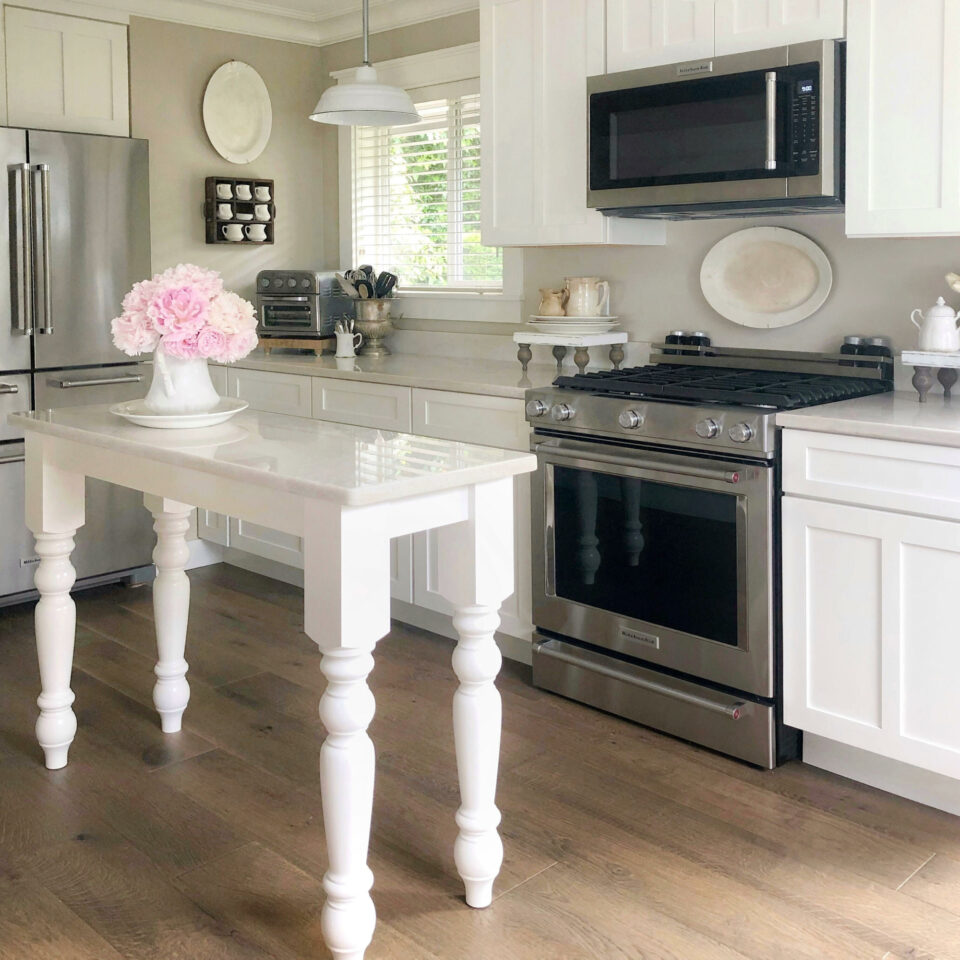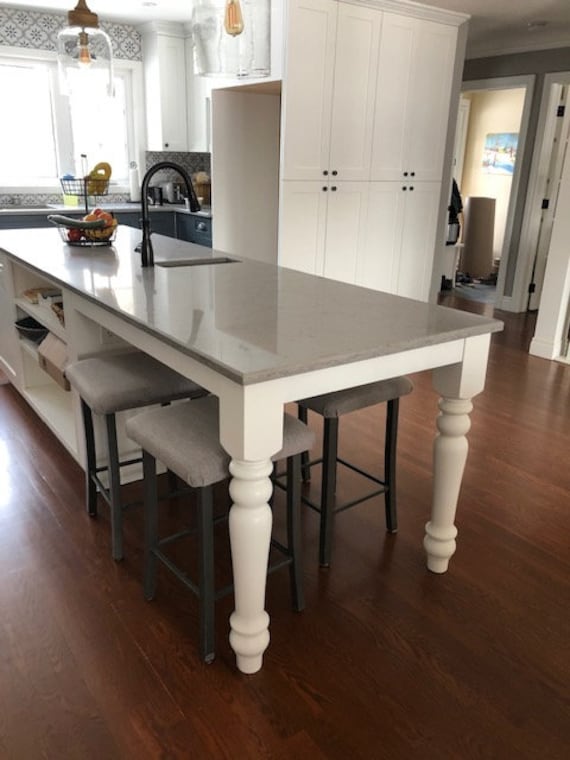A Comprehensive Guide to Picking the Right Kitchen Island Leg
A Comprehensive Guide to Picking the Right Kitchen Island Leg
Blog Article
Discovering the Crucial Functions of a Kitchen Area Island Leg for Your Culinary Space
The kitchen area island serves as a main hub in any type of cooking area, and the choice of leg style is critical in boosting both its performance and visual charm. Understanding the necessary features of cooking area island legs-- including product options, style styles, and stability aspects-- can significantly affect the overall experience within the kitchen area.
Importance of Kitchen Area Island Legs
Cooking area island legs play an important duty in both the performance and looks of a kitchen area. They not just sustain the weight of the island however likewise enhance the overall style, adding to the kitchen area's aesthetic appeal. The option of legs can determine the design of the kitchen, be it contemporary, standard, or rustic.
Functionally, robust and correctly created legs make certain security, enabling the risk-free use of the island for numerous jobs such as cooking, dining, or amusing. Solid legs stop tottering and moving, supplying a trustworthy surface for everyday tasks.
Additionally, the height and positioning of the legs can influence the comfort degree for those seated at the island. A well-considered height can accommodate bar stools or chairs, advertising an inviting setting for events.
Along with these functional considerations, kitchen island legs can serve as a centerpiece in the area (kitchen island leg). Attractive or distinctively developed legs can elevate the layout visual, making the island a focal point. Thus, selecting the appropriate cooking area island legs is necessary for balancing form and feature in any type of culinary room
Product Options for Legs
Choosing the appropriate product for kitchen area island legs considerably impacts both resilience and design. Usual material alternatives consist of metal, rock, and wood, each offering distinct benefits.
Wood is a preferred choice as a result of its warmth and versatility. It can be quickly customized to match numerous design designs, from rustic to contemporary. Hardwoods like oak and maple provide superb stamina and long life, while softer woods can be extra prone to damage.
Metal legs are favored for their streamlined, modern visual. kitchen island leg. Stainless steel and light weight aluminum are not only robust yet also immune to corrosion and corrosion, making them suitable for kitchen atmospheres. They can develop an industrial appearance and are often offered in numerous finishes to match various other kitchen aspects
Rock legs, such as granite or marble, include an element of high-end and security. While larger than other materials, they use remarkable toughness and can withstand significant weight. They might require additional support to make sure appropriate equilibrium.
Ultimately, the selection of material should straighten with both practical requirements and the total style vision of the cooking area area, guaranteeing that the island legs boost both utility and visual appeals.
Layout Styles to Take Into Consideration
What style styles should be considered when selecting legs for a kitchen island? The option of leg style substantially influences the general aesthetic of your cooking space. For a modern kitchen, find more information streamlined and minimalistic leg styles, such as stainless-steel or geometric shapes, can boost the contemporary allure, offering a tidy and uncluttered appearance.
In contrast, typical kitchen areas gain from classic styles such as transformed or carved wooden legs, which include heat and character. These alternatives frequently include intricate information that enhance classic home furnishings. For a rustic atmosphere, consider legs made from redeemed wood or functioned iron, which bring an organic, earthy quality to the space.
If you lean towards an industrial theme, durable metal legs with a distressed coating may be perfect, giving an edgy yet sophisticated touch. In addition, farmhouse design cooking areas can include chunky legs that stimulate a feeling of durability and homeliness.

Elevation and Security Elements
The elevation and security of a cooking area island are crucial elements that directly impact its performance and individual experience. A suitable cooking area island leg need to give enough elevation to suit a selection of jobs, from food prep work to informal eating.
Security is similarly crucial, especially as kitchen area islands typically function as prime focus in culinary environments. A stable leg design minimizes tottering and changing, which can result in accidents or discomfort throughout usage. Materials such as solid wood, steel, or a mix thereof are frequently utilized to achieve the necessary sturdiness. Furthermore, the leg's add-on to the island's base need to be safe, guaranteeing longevity and strength versus the deterioration of daily usage.
Personalization and Devices
Personalization options and devices for kitchen island legs can significantly improve both the aesthetic charm and functionality of the area. Homeowners can choose from a variety of materials, consisting of rock, timber, and metal, enabling smooth integration with existing kitchen area style. The choice of surface-- be it an all-natural tarnish, repaint, or powder finish-- more customizes the appearance, ensuring that the island matches the total layout motif.
Along with material and surface, property owners may additionally discover the incorporation of devices such as decorative brackets, flexible feet, or integrated shelving. Braces can provide extra assistance while adding to a rustic or modern-day visual. Adjustable feet are especially useful for uneven floor covering, making sure the island continues to be steady and level, which is essential for both safety and usability.

Verdict
To conclude, cooking area island legs offer an important duty in supplying stability and other enhancing the general aesthetic of the cooking area. The selection of materials and design styles adds to both performance and visual appeal, while factors to consider of Recommended Reading elevation and security make certain functional use. In addition, modification alternatives and devices can boost the kitchen area island, making it an unique focal factor within the home. Hence, cautious consideration of these attributes is crucial for a reliable kitchen area design.
The kitchen island serves as a central hub in any culinary space, and the choice of leg design is critical in enhancing both its capability and visual allure. Understanding the necessary attributes of kitchen area island legs-- including material alternatives, layout styles, and stability elements-- can considerably impact the overall experience within the kitchen area.Kitchen area island legs play an important role in both the performance and appearances of a kitchen area room.What design styles should be taken into consideration when selecting legs for a kitchen island?In final thought, kitchen island legs serve a vital duty in providing stability and boosting the total visual of the cooking area.
Report this page